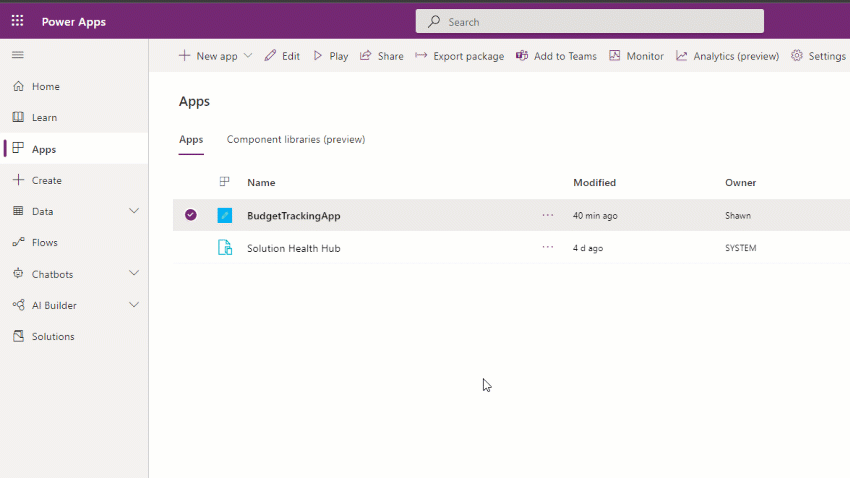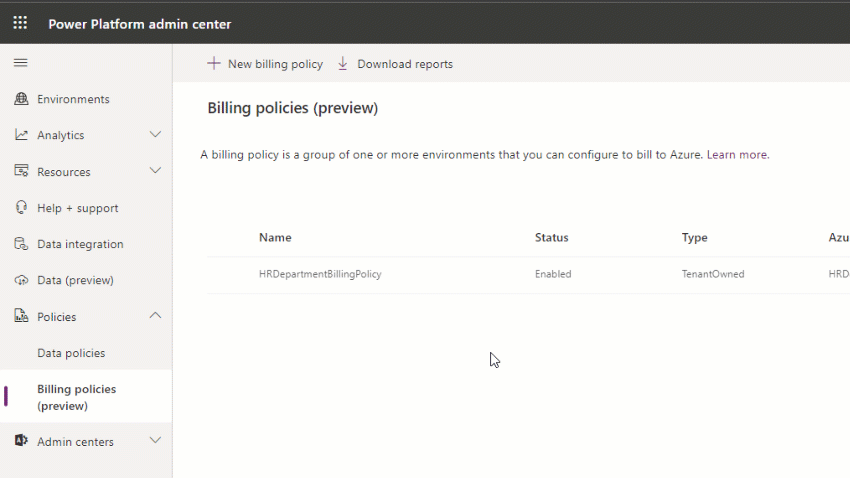Announcing the general availability of pay-as-you-go for Power Apps
We are pleased to announce the general availability of a new and more flexible way to pay for Power Apps and related Power Platform services. Customers now can use an Azure subscription to cover their Power Apps usage and Dataverse capacity costs based on actual usage.
Register to join us for a Power Apps pay-as-you-go webinar on March 22, 2022
Historically, low-code platforms have required customers to figure out their licensing needs in advance – often involving time-consuming procurement processes negotiated between developers, makers and IT professionals. While there are many benefits to the scale and predictability of user-based licensing, several scenarios today require the agility of a usage-based model. With deep roots in both Microsoft 365 as well as Azure, Power Platform is uniquely equipped to offer customers both options.
With the new pay-as-you-go plan, customers only pay for what they use, giving them more flexibility to get started with low code with low risk and then scale their investments over time based on the usage patterns of their solutions.

Great for developers building Power Apps that leverage Azure services
The pay-as-you-go option for Power Apps is a great solution for developers who are already using Azure subscriptions to pay for the cloud services they need for their applications. Let’s say you are planning to build a Power Apps mobile app that leverages Dataverse as well as a set of Azure-hosted APIs. Today you would need to purchase Power Apps licenses from Microsoft or a partner, and allocate those licenses before deploying your app , and also pay for the Azure services you are using with your Azure subscription. Now, with Power Apps pay-as-you-go you can simply use the same Azure subscription you are using to pay for your Azure services to pay for Power Apps as well.
Test the waters
When building a new app it is often tough to predict how many users will want to use it, making it hard to forecast your licensing needs in advance. Now you can start with the pay-as-you-go option to gauge usage patterns then determine whether purchasing a pre-paid Power Apps subscription plan makes sense.
Only pay when users use your apps
Let’s say you have created an app (or set of apps) that you need to share with a large set of users in your organization, but which you expect will only be used by a varying subset of those users on an occasional basis. In this instance it may be more economical to leverage Power Apps pay-as-you-go instead of purchasing pre-paid Power Apps subscription plans for every user you share the app with.
Share costs across your organization
Many organizations want to allocate software license costs to the department or team that used the licenses. Power Apps pay-as-you-go makes this possible by letting teams pay for Power Apps using Azure subscriptions linked to their own departmental budgets, and by providing the option to use Azure Cost Management and Azure tags to visualize and divide up costs.
How it works

To take advantage of Power Apps pay-as-you-go simply link the environment containing your apps to an Azure subscription. Usage of Power Apps and Dataverse in that environment will then be billed to your subscription using a new set of Azure meters:
- Power Apps per app pay-as-you-go meter: this meter provides the flexibility for organizations to pay only when users run an app . This contrasts with the existing Power Apps per app subscription plan which requires licenses to be purchased and allocated to an environment in advance of sharing apps, and with which licenses are consumed when an app is shared with a user (regardless of whether that user runs the app or not).
- Dataverse pay-as-you-go meters: these meters let you pay for the Dataverse storage consumed by your apps. There are separate meters for Dataverse database storage, file storage, and log storage. 1GB of database storage and 1GB of file storage is included with each environment you link to Azure.
- Power Platform requests meter: we have recently increased the Power Platform request limits (formerly called API calls) for Power Platform licenses to cover the needs of most customers and scenarios. For customers with extremely high scale scenarios who need more than those limits, the Power Platform requests meter will all be available for overages above and beyond standard Power Platform request limits.
For more information, pricing, and examples covering how each meter works please see our docs.
Setting up pay-as-you-go billing for Power Apps
You can set up pay-as-you-go billing either in Power Apps or the Power Platform admin center.
To get started you will need:
- Access to an Azure subscription with permissions to create new resources in that subscription and to register resource providers. Typically people get these permissions by having an “Owner” or “Contributor” role in the subscription.
- Admin access to an environment in the Power Platform.
Then you can follow the steps below in Power Apps or the Power Platform admin center:
From Power Apps
From Power Apps select Settings for an app and then select Setup pay as you go. You will then create a link between the environment your app is in to an Azure subscription. This link is called a billing policy. Enter your subscription details and click Next.

From the Power Platform admin center
In the Power Platform admin center admins can create and edit billing policies and link multiple environments to the same Azure subscription. This is a great way to aggregate Power Platform costs for environments that a team owns to that team’s Azure subscription. From the Power Platform admin center select Policies -> Billing Policies -> New billing policy and follow the steps.

Monitoring and managing costs
Moving from a pre-pay licensing model to a pay-as-you-go model often raises questions about how to monitor costs to prevent unexpected charges. With Power Platform pay-as-you-go we will provide a range of options for customers to stay on top of their costs:
Azure Cost Management
In the Azure portal, Azure Cost Management lets you view a breakdown of charges associated with your meters and see how they are changing over time.

Azure Cost Management also allows you to set budgets for each meter. These budgets can be used to trigger alerts when you approach spend thresholds you define. They can also be user to trigger automated administrative actions you can configure to manage your Azure spend.

Azure tags
You can add customizable tags to the Power Platform account resources in your subscription. Tagging is a great way to organize related Azure resources by solution area, department, cost center and more. This can be helpful to streamline internal chargebacks and administrative functions.

Detailed usage reports
The Power Platform admin center will provide a downloadable report with a detailed breakdown of which users, apps and environments generated charges for the Power Platform pay-as-you-go Azure meters.
Using pay-as-you-go and pre-pay together
Pay-as-you-go is configured on an environment-by-environment basis, so you have the flexibility to adopt it wherever it makes sense for your organization and stick with the pre-paid model where it doesn’t. In the example below the customer has chosen to use pay-as-you-go for their HR team and the Finance team’s environments, but not for their Marketing team’s environments.

Furthermore, within a pay-as-you-go environment it is possible to disable the Power Apps per app pay-as-you-go meter for specific apps. Any unlicensed users will be blocked from accessing those apps.
The pre-paid Power Apps per app subscription plan cannot be used to license users in a pay-as-you-go environment, but the per user plan can be. This means that you can simultaneously leverage the per user plan to license some users of your apps in a pay-as-you-go environment while also using the Power Apps per app pay-as-you-go meter to cover others.
What’s coming next
Looking forward we plan to introduce capabilities like APIs to link environments to Azure subscriptions, and integration with the Power Platform Center of Excellence Starter Kit. Longer term we have a range of services that would make sense to offer in a pay-as-you-go model and would love your input on where we should focus our efforts next.
Please give it a try and share your thoughts!
Webinar: Register to join us for a Power Apps pay-as-you-go webinar on March 22, 2022
Docs: Power Apps pay-as-you-go documentation
Questions: Power Apps community forum
Mechanics video: https://aka.ms/IgniteNov21/PPMechanics



